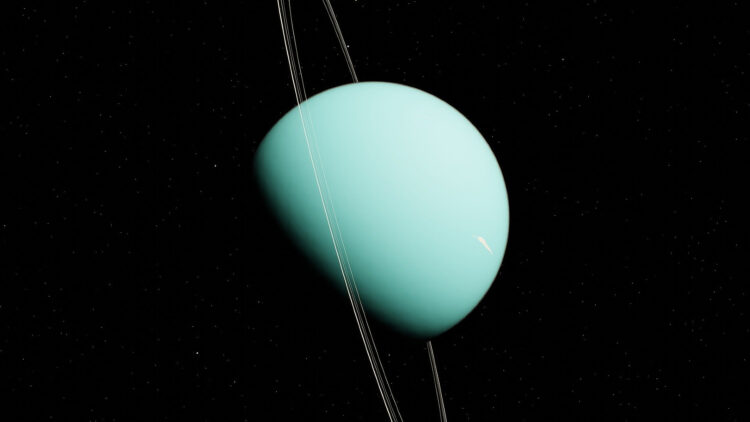For decades, the planet Uranus has captivated scientists, hiding many mysteries that remained largely unexamined. Clues to understanding this celestial blue ball are rooted in data collected from a flyby in the 1980s. However, a plasma burst from the Sun prior to this mission obscured crucial information about Uranus.
Luckily, a new reanalysis of that data sheds light on the ice giant’s peculiarities, finally revealing its hidden dynamics.
Understanding Uranus: Breaking down the blue ice giant
The seventh planet from the Sun, Uranus is remarkable for its unusual axial tilt of approximately 98 degrees. This tilt causes it to roll along its orbit, resulting in extreme seasons that last over 20 Earth years. Its striking blue-green color is attributed to methane gas in its atmosphere, which absorbs red light.
Uranus has 27 known moons and a system of rings that, while less iconic than Saturn’s, adds to its allure. These rings are thought to be remnants from moonlets that disintegrated, hinting at the planet’s complex history.
Harboring the coldest atmosphere in the solar system, temperatures on Uranus can plummet to -317 degrees Fahrenheit, posing challenges for potential space missions. Additionally, it has a long orbital period, taking 84 years to complete a single revolution around the Sun. Altogether, these unique features make the ice giant a compelling subject for study within our universe.
NASA’s Voyager 2: The historical flyby of Uranus and its magnetosphere
In 1986, NASA’s Voyager 2 spacecraft made a flyby of Uranus, becoming the first to collect detailed information about this distant planet. This mission not only unveiled new moons and rings, but it also revealed perplexing anomalies, especially regarding Uranus’ magnetic field.
Initial observations suggested an uneven magnetic field, leading researchers to consider the planet’s distinct characteristics. However, recent studies propose that a solar wind event occurring just before Voyager’s arrival may have distorted the magnetosphere, making data collection more challenging.
“If Voyager 2 had arrived just a few days earlier, it would have observed a completely different magnetosphere at Uranus,” says Jamie Jasinki, study lead author and space physicist at NASA’s Jet Propulsion Laboratory (JPL) in Southern California.
The interaction of charged solar particles with Uranus’ magnetic field complicated Voyager’s readings. Although intense radiation belts were detected, these findings revealed an unexpected lack of plasma. This led scientists to erroneously believe that Uranus’ moons were inactive and didn’t contribute ions to the magnetosphere.
Decoding Uranus’ magnetosphere: What this means for NASA’s future missions
Recent analyses reveal that a solar wind burst likely expelled plasma from Uranus’ magnetosphere at the time of the flyby. The resulting electron radiation belts are indicative of geological activity on Uranus’ major moons, challenging the long-held belief that they are dormant.
This insight into the ice giant’s magnetosphere opens new avenues for future explorations that may answer questions regarding Uranus’ composition and behavior. As such, the planet has become a priority for NASA’s upcoming planetary missions. Following the National Academies’ 2023 Decadal Survey, scientists are advocating for more detailed investigations into its enigmatic characteristics.
Dr. Linda Spilker, a planetary scientist working at JPL who was involved with the 1986 Voyager mission, says that “the magnetosphere Voyager 2 measured was only a snapshot in time. This new work explains some of the apparent contradictions, and it will change our view of Uranus once again.”
As scientists uncover the mysteries of Uranus, the excitement of discovery continues to grow. Each new finding challenges our understanding of this celestial blue ball. With advanced technologies and upcoming missions, we stand poised to unlock Uranus’ secrets, deepening our connection to the wonders of our solar system.

